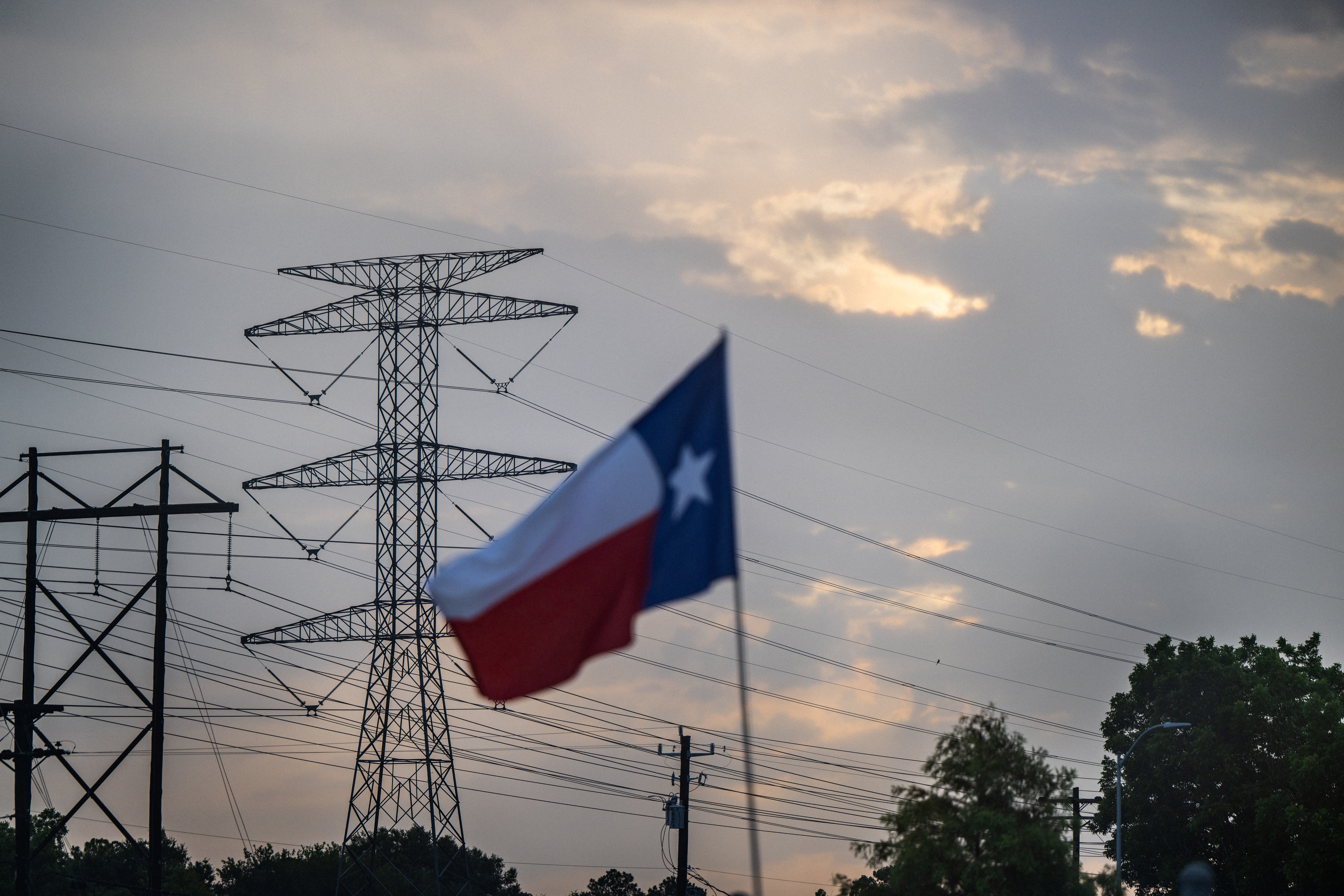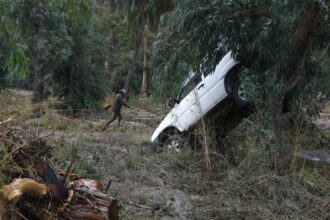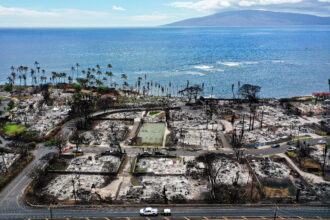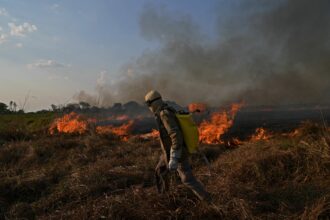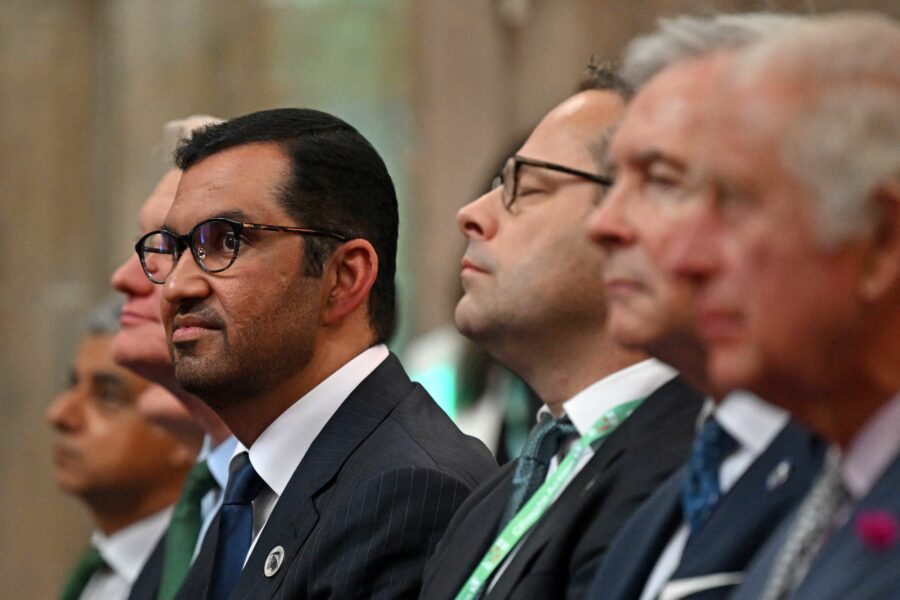Florida is bracing for yet another major storm in the span of a year as rapidly intensifying Hurricane Idalia, which is expected to hit the state’s western coast Wednesday at Category 3 strength, churns through abnormally warm Gulf Coast waters. The storm is just the latest extreme weather event this summer to draw attention to the nearly depleted federal disaster relief fund as rising global carbon emissions drive record-setting natural disasters.
Officials have issued evacuation orders in at least 10 Florida counties, with 46 counties now under an emergency declaration. Dozens of schools and universities in the state have been closed, along with a major airport in Tampa.
“This is going to be a major hurricane,” Gov. Ron DeSantis warned at a Monday press conference. “The water is warm and there’s not going to be much to slow it down.”
The summer of 2023 has been defined, in some ways, by the dizzying pace of major extreme weather events occurring around the world—often simultaneously. This month alone, large swaths of the United States baked under triple-digit heat waves, southern California saw its first tropical storm in nearly a century and Hawaii experienced its deadliest wildfire on record, which killed at least 115 people, with hundreds still unaccounted for.
The spate of summer disasters has highlighted another potentially looming crisis in the U.S. The federal Disaster Relief Fund, which allocates billions of dollars to help communities recover after a major disaster, is set to run out of money this fall if Congress can’t come to an agreement on how to replenish it. Last month, officials warned that the fund could reach a $4.2 billion deficit just as both the hurricane and wildfire seasons reach their peak activity, potentially delaying and jeopardizing recovery efforts for Americans around the nation.
“From atmospheric rivers in January to tornadoes and wildfires in December, we can no longer speak of a disaster season,” Deanne Criswell, administrator of the Federal Emergency Management Agency, which manages the disaster fund, told a House subcommittee in July. “We now face intensified natural disasters throughout the year, often in places that are not used to experiencing them.”
The U.S. has already seen 12 weather and climate-related disasters this year, with each event resulting in more than $1 billion in damages, according to the National Centers for Environmental Information. It’s a trend that has only increased over time, the agency’s data shows, with the average number of U.S. disasters each year roughly quadrupling since 1980. Earlier this month, federal forecasters also increased how many named storms they expect to see develop in the Atlantic this year to between 14 and 21, up from their forecast of 12 to 17 named storms back in May.
But despite the clear need for federal disaster aid, efforts to replenish the fund have remained stalled in Congress, largely due to competing political interests and an increasingly polarized fight over federal spending—particularly the national debt ceiling. The legal limit on how much money the United States can borrow has become a focal point of the House Republicans’ culture war on so-called “woke finances”—a phrase that now serves as shorthand for government spending on any number of progressive priorities, including addressing climate change.
On Monday, the Biden administration announced nearly $3 billion in funding for hundreds of communities across the U.S. to reduce their vulnerability to climate-fueled extreme weather events. The money, which will come from the Bipartisan Infrastructure Law that Congress passed in 2021, will go toward building more weather-resilient infrastructure and flood mitigation efforts, among other projects.
But that money—though important—is geared toward preventative measures and is separate from FEMA’s disaster relief fund, meaning it won’t help communities recover from this summer’s devastating weather. If the relief fund isn’t replenished soon, the agency could be forced into a difficult position, having to choose which disaster recovery efforts to fund and which to postpone.“FEMA provides life-saving resources to areas impacted by disasters all around the nation,” Rep. Jared Moskowitz, a Florida Democrat and the state’s former emergency management director, told Roll Call last month. “Emergency management cannot be politicized and should always be prioritized.”
More Top Climate News
String of Global Climate Protests Target Jets, Yachts and Other Luxuries: Climate activists have spray painted a superyacht, blocked private jets from taking off and plugged holes in golf courses this summer as part of an intensifying campaign against the emissions-spewing lifestyles of the ultrawealthy, David Brunat reports for the Associated Press. “We do not point the finger at the people but at their lifestyle, the injustice it represents,” said Karen Killeen, an Extinction Rebellion activist who was involved in the protests, which have cropped up in several European nations and the United States.
What to Know About Climate Change Making It Into the GOP Debate: An early question about global warming made a surprise appearance in the first GOP debate for presidential candidates last week, an occurrence that some young Republicans say is a win, Ximena Bustillo reports for NPR. But as CNN’s Ella Nilsen reports, the question prompted one leading candidate, Vivek Ramaswamy, to call efforts to address the climate crisis “a hoax.” Reporting by HEATED’s Emily Atkin shows how Ramaswamy, a biotech mogul, makes money by promoting that unsubstantiated viewpoint.
Wildfire Prompts Evacuation of Entire Louisiana Town: An entire town in southwestern Louisiana was under mandatory evacuation orders over the weekend because of a wildfire that state officials say is the largest they have ever seen, Sara Cline reports for the Associated Press. Louisiana residents are used to dealing with storms and flooding, but recently, they’ve been plagued by record-breaking heat and extreme drought that’s increasing the risk of fire. In fact, the state has seen a whopping 441 wildfires this month alone.
Today’s Indicator
26%
That’s the percentage that ExxonMobil believes global carbon emissions will decrease by 2050, according to the oil giant’s most recent outlook. That falls far short of what the United Nations says is needed to limit the most dangerous consequences of climate change.












